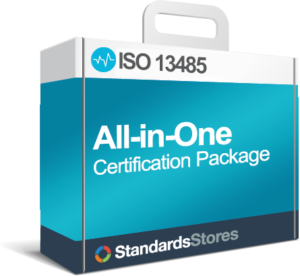ISO 13485 Medical Device Design Records
The FDA and ISO 13485 requires a series of medical device design records. As there are many acronyms and similar terms, we wanted to discuss the three most similar and often mixed up documents:
DESIGN HISTORY FILE (DHF)
Design History File (DHF) is a file that covers the plans, requirements, design review records, and design verification result. DHF is referenced in 21 CFR Part 820.30 and is now referenced in the newest version of ISO 13485 section 7.3.10. The ISO standard specifies the need to establish design and development files. The DHF specifically relates to design controls- being the last step in which you compile the documents from your design and development process.
So, what are design controls? Design controls are a way to ensure that your organization develops a medical device that is safe. In essence, design controls are proof that you have designed a safe product that meets user needs and requirements. “Design Controls” is an FDA term and defined in FDA 21 CFR 820.30. The Design Control requirements for the ISO 13485:2016 standard are similar to that of the FDA. When you compare the two requirements, the ISO 13485 standard refers to design control section as 7.3 Design and Development.
The FDA states “Each manufacturer shall establish and maintain a DHF for each type of device. The DHF shall contain or reference the records necessary to demonstrate that the design was developed in accordance with the approved design plans and the requirements of this part.”
When you are creating a DHF you are required to record:
- Design and Development Planning- this should include the design plan document, developed according to this part.
- Design Inputs- this includes procedures for establishing design inputs that address the intended use, user needs and the approved design input documentation itself.
- Design Verification- a process that confirms that the design output conforms to the design input. Design verification should show that the specifications are the correct specifications for the design.
- Design Validation- the process in which the device design is to approve initial volume production processes. The purpose for the process validation is to confirm that the design functions according to design inputs when produced using normal production processes rather than prototype processes.
- Design Reviews – A formal review of the medical device design by representatives of each design function participating in the design efforts as well as other interested parties (i.e. marketing, engineering).
- Design Outputs-the results of the design and engineering efforts. These are normally the final specifications for the device. Including the manufacturing process and the incoming, in-process and finished device inspection, measurement or test methods and criteria.
When you are putting together a DHF there are several key factors that you should consider such as:
- Giving yourself an appropriate amount of time to create a detailed document. This document is a key source that medical device regulators monitor and therefore it may receive scrutiny from the FDA, make sure you give yourself time to keep this file updated and organized with all necessary information.
- Each organization is responsible to prove traceability and linkages between the DHF elements. When you create this document consider making a robust matrix in order to create an easy to follow chart for the FDA.
- The DHF needs to be well organized and available to all project team members.
- DHFs are large documents. Recording information manually can be time-consuming and can cause issues with the organization.
- Keep the DHF separate from your project file and other documents. You want to stay well organized.
DEVICE MASTER RECORD (DMR)
A Device Master Record (DMR) is a document that contains the details necessary in order to build and test a device. DMR is mentioned in 21 CFR Part 820.40. A DMR contains all of the specifications necessary to build the device from start to finish. The DMR does not contain the design history (that is addressed in the DHF), it will only contain the current information and specifications.
According to the FDA, your DMR must include the following information:
- Specifications on the device including drawings, composition, formulation, component specifications, and software specifications.
- Production process specifications including the appropriate equipment, production methods, and production procedures and production environment specifications.
- Quality assurance procedures-acceptance criteria and quality assurance equipment used.
- Packaging and labeling specifications- this must include the methods and processes.
- Installation, maintenance, and servicing procedures and methods.
DEVICE HISTORY RECORD (DHR)
The Device History Record (DHR) Requires you to maintain records of dates of manufacture, quantities manufactured, quantity released, lots, acceptance records, and more. When you are working on the compliance process, the device history record (DHR) would be the next step after the DHF and DMR. The DHR contains all documentation related to manufacturing and tracking a device. This document shows that your organization manufactured the device according to the information in the DMR. Record keeping is again addressed in the 21 CFR Part 820:184. According to the FDA, the DHR must include the following information:
- Dates of manufacture.
- Quantity manufactured.
- Quantity released for distribution.
- Acceptance records which demonstrate the device is manufactured in accordance with the DMR.
- Primary identification label and labeling used for each production unit.
- Any unique device identifier, or universal product code, and/or any other device identification and control number(s) used.
The DHR must be applied to each batch of devices, meaning that each new batch produced must be tested to ensure that the product meets the specifications defined in the DMR. The DHR is your overall history of the device, much like the DHF is the overall history of design.


